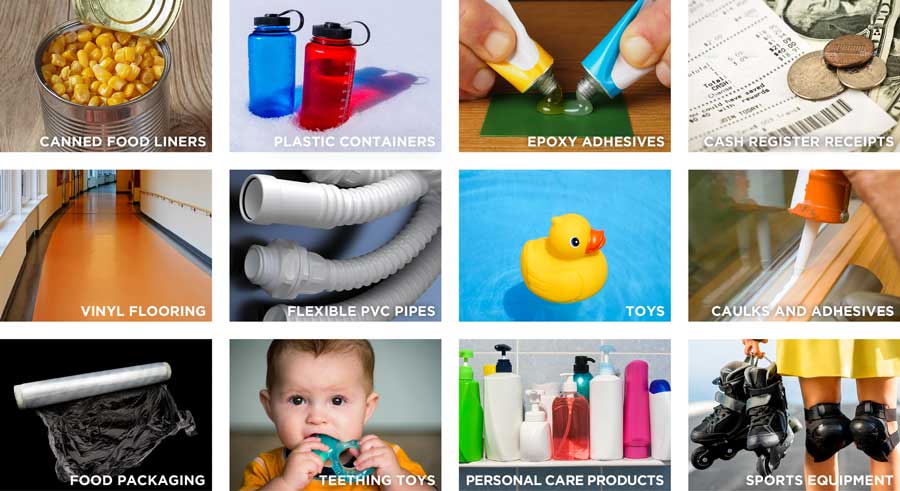These hormone disrupting chemicals are so widely used that we are constantly exposed. They can harm our health, even at very low levels.
What are they?
Bisphenols and phthalates are chemicals that have many uses, including making plastics stronger or more flexible.
Where are they found?
Bisphenols are present in some polycarbonate plastic products (including water bottles, food storage containers and packaging, and sports equipment), epoxy resin liners of aluminum cans, and cash register receipts.
Phthalates can be found in some polyvinyl chloride (PVC) plastic products (including vinyl flooring, shower curtains, toys, and food packaging and containers), glues, caulks, paints, personal care products, and fragranced products such as laundry soap and air fresheners.

What are the health concerns?
Even at low levels, bisphenols and phthalates can mimic or block hormones, disrupting vital body systems. Young children and fetuses are especially vulnerable.
Early life exposure to Bisphenol A (BPA) is linked to asthma and neurodevelopmental problems such as hyperactivity, anxiety, depression, and aggression. In adults, it is associated with obesity, type 2 diabetes, heart disease, decreased fertility, and prostate cancer.
Prenatal and early life exposure to phthalates is linked with asthma, allergies, and cognitive and behavioral problems. It may also affect reproductive development in boys. In adult men, phthalates are associated with reduced fertility.
How are we exposed?
Bisphenols and phthalates leach from products into food, water, and dust. The major route of exposure in humans is through eating food or drinking water stored in containers made with them. We are further exposed through ingesting and inhaling dust and through skin absorption. Bisphenols and phthalates have been detected in the urine of most people tested. Because the body eliminates these chemicals very quickly, this high frequency of detection indicates that our exposure is ubiquitous and continuous.
What are the environmental concerns?
Bisphenols and phthalates enter the environment by leaching from products, manufacturing processes, and recycling. There are substantial amounts of plastic debris containing these chemicals in marine and freshwater ecosystems. As a result, the levels detected in aquatic wildlife are as high or higher than the levels that cause hormone disruption in laboratory animals. The similarities in hormone disruption mechanisms that have been observed between different species suggest that wildlife could be harmed by the same low levels of exposure.
Should they be used?
Many products are now labelled “BPA-free.” However, BPA is often replaced with Bisphenol S (BPS) and Bisphenol F (BPF), which are less studied but appear to have similar hormone-disrupting effects.
The Consumer Product Safety Commission banned the use of six phthalates in toys and child care products, but they are still widely used in other products, such as food packaging, personal care products and building materials. Like BPA, the phased-out phthalates are often replaced with other phthalates with similar properties and less health information.

